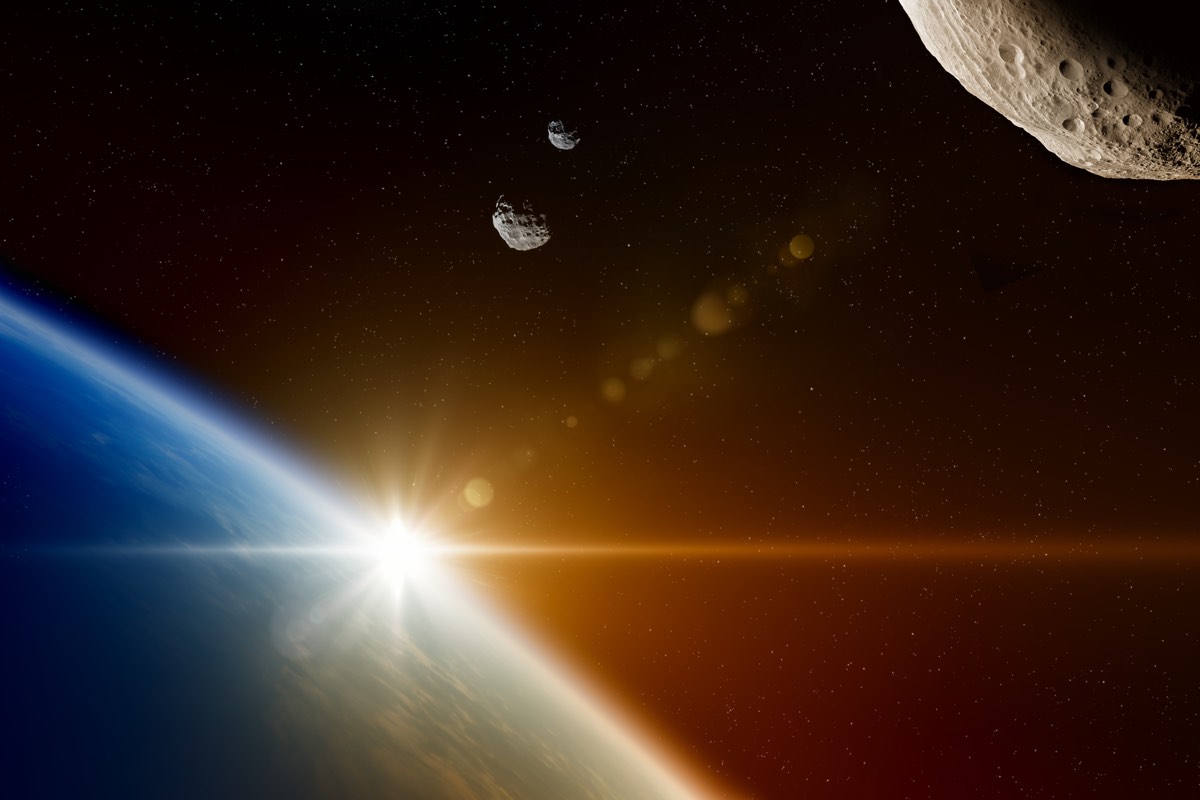How a Football Field-Size Asteroid Caught Us by Surprise
Earth received a cosmic close shave on Sunday (April 15) when a football field-size boulder passed by at half the moon's distance from our planet. Named 2018 GE3, the asteroid was detected only a few hours before its flyby, spotted by the automated Catalina Sky Survey.
Why did astronomers pick up the object only at the last minute?
At its closest approach, at 2:41 a.m. EDT (0641 GMT), 2018 GE whipped by Earth at a distance of only 119,500 miles (192,300 kilometers), according to EarthSky. That's a close call, given that the asteroid has an estimated diameter of 157 to 361 feet (48 to 110 meters), making it much larger than the cosmic object that exploded over Chelyabinsk, Russia, in 2013. [The 7 Strangest Asteroids: Weird Space Rocks in Our Solar System]
While a football field-size asteroid is a small rock in the context of the larger universe, it's still big for an object passing by Earth. Back in February, NASA issued a public statement about a smaller, close-flying asteroid called 2018 CB, which was estimated to be from 50 to 130 feet (15 to 40 m) in diameter.
"Asteroids of this size do not often approach this close to our planet — maybe only once or twice a year," Paul Chodas, manager of the Center for Near-Earth Object Studies at NASA's Jet Propulsion Laboratory in California, said in a statement at the time.
Most asteroids reside in the asteroid belt, which lies between the orbits of Mars and Jupiter. There are, however, some asteroids that pass by Earth. Sometimes astronomers don't pick them up until a few hours or days before the flyby. Other objects likely pass by us unseen, Michael Busch of the National Radio Astronomy Observatory, told Space.com in 2013.
Why? Asteroids are small and dark and therefore very difficult to track. The largest known asteroid is Vesta, which is pretty tiny compared with a planet; it is only 329 miles (530 km) in diameter — roughly the distance from New York City to Buffalo, New York. Vesta, however, isn't representative of asteroid size in general. Many of these small worlds are only a few dozen feet in diameter, making them hard to see but still big enough to cause damage if they hit Earth.
Get the world’s most fascinating discoveries delivered straight to your inbox.
Not only are asteroids small, but they're also pretty dim, at least when perceived in visual wavelengths. The most common kind of asteroid, called a carbonaceous type, is very dark. This kind of space rock may not reflect enough light for an optical telescope to spot it. A near-Earth asteroid also moves quickly in the sky compared with a planet, because the rock is much closer to us. So, a telescope needs to be looking in just the right area, at the right time, to catch it.
The best way to find these asteroids is to have many telescopes scanning the sky at once, and, fortunately, NASA does have such a program. Run through the agency's Planetary Defense Coordination Office, the program uses a large network of telescopes to scan the skies. These instruments, however, are optimized to search for much larger asteroids, which would have a catastrophic impact across huge regions of Earth. (Fortunately, NASA hasn't spotted any imminent threats of this kind; the agency publishes all results publicly at the Small-Body Database Browser.)
NASA's focus right now for near-Earth objects is on cataloging 90 percent of asteroids that are larger than 460 feet (140 m) wide and that will come to within about 4.65 million miles (7.48 million km) of Earth, or about 20 times the distance from Earth to the moon, according to the agency. The largest estimate for 2018 GE3 would make it only about three-fourths that size.
Originally published on Live Science.

Elizabeth Howell was staff reporter at Space.com between 2022 and 2024 and a regular contributor to Live Science and Space.com between 2012 and 2022. Elizabeth's reporting includes multiple exclusives with the White House, speaking several times with the International Space Station, witnessing five human spaceflight launches on two continents, flying parabolic, working inside a spacesuit, and participating in a simulated Mars mission. Her latest book, "Why Am I Taller?" (ECW Press, 2022) is co-written with astronaut Dave Williams.



